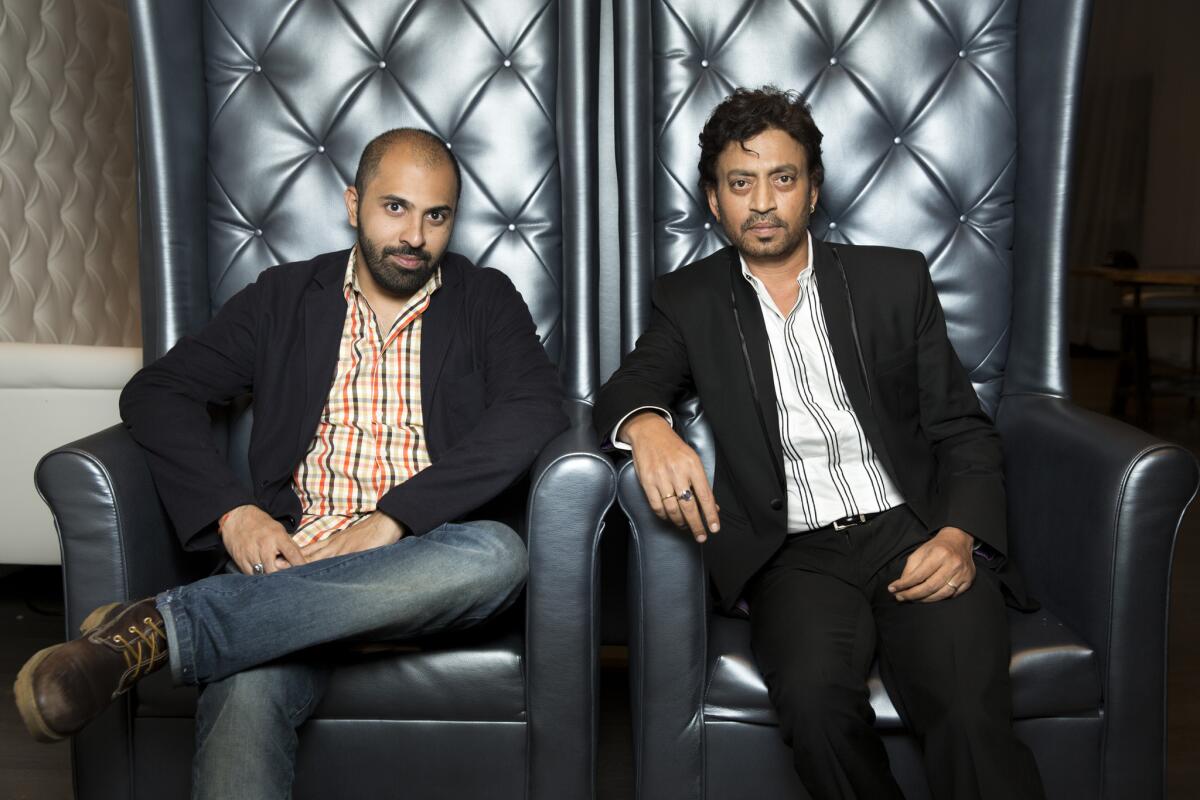Ritesh Batra dives into the dabbawalla tradition in ‘The Lunchbox’

- Share via
When Ritesh Batra first began exploring the idea of constructing a film around Mumbai’s “dabbawallas” — the white-clad men who traverse the Indian city’s teeming streets delivering hot, home-cooked meals to thousands of office workers — his original intent was to do it as a documentary.
But after embedding himself with a coterie of the delivery men, also called “tiffin wallas” (“tiffin” is an Indo-British colloquialism for lunch), Batra changed tack and decided to make a feature instead.
“I went in with [the dabbawallas], without a camera,” said Mumbai-based Batra, during a recent visit to Los Angeles. “I became one of them and heard little gems of stories.”
PHOTOS: Box office top 10 of 2013
The result is “The Lunchbox,” a quietly affecting film about a neglected housewife, Ila (Nimrat Kaur), who is hoping to spice up her marriage by reinventing the lunches she sends to her preoccupied husband. But the stainless-steel encased hot meals are mistakenly delivered to Saajan (well-known Indian actor Irrfan Khan), a widower poised to retire from his paper-pushing job at an insurance company.
An intimate correspondence develops between the two, their relationship unfolding over sub-plots that involve an unseen female confidant who lives above Ila, directing her toward potent recipes, and the sycophantic worker at Saajan’s place of work who will be replacing him.
Batra’s instincts to make a feature film seem to have been spot-on: “The Lunchbox” won the Critics Week Viewers Choice Award at Cannes last year, where it received a standing ovation, and has been among the highest-grossing art films in history in India, where it has made off with a cache of awards. It opens in L.A. and New York on Friday.
Batra’s success with his first feature film came in a circuitous way. In 2009 he was one of 12 filmmakers selected by the Sundance Institute for its Directors and Screenwriters Labs, where he was working on a film called “The Story of Ram.”
BEST MOVIES OF 2013: Turan | Sharkey | Olsen
“But I just couldn’t get it to work,” said Batra of the project. “It was hard to leave it behind, but I had to. And I thought a documentary would be a good way to get over what wasn’t working. It’s more of an organic process.”
Having grown up in Mumbai the son of a merchant marine officer (who received daily hot lunches fresh from Batra’s mother), setting a story in the world of the dabbawallas seemed an intriguing one. The system, which is 125 years old, is one so fascinating that it has even been studied by Harvard (something that is elliptically referred to in the film). After all, here is a system that delivers some 130,000 lunches every day in a city of close to 11 million people, with a near-negligible error rate. It doesn’t use bar codes or fancy tracking devices; because dabbawallas have traditionally been illiterate, the tiffins are placed in color groups depending on what part of the populous city they are headed, journeying there via bicycle, train and on foot, and returned to the home the same way in the afternoon.
The nearly flawless system gave Batra a promising premise: What would happen if something was delivered to the wrong place?
“In the movie, there is a line between making a mistake and seeing a miracle happen,” said Batra. “I wanted to show that this was a miracle.”
PHOTOS: Behind the scenes of movies and TV
It took less than a month to shoot the film, with a six-month pre-production time — a necessity, said Batra, given the inherent complications of filming in Mumbai.
“When things fall through, as they do in Mumbai, you have to recalculate very quickly,” Batra said. “You have to learn how to embrace the chaos of the place.”
That involved being ready to rent out a compartment in a train to shoot certain scenes when the budget wouldn’t stretch to the entire train, and then filling the carriage with extras gathered on the spot, who did it just for a chance to be close to Khan.
Even though Batra has spent most of his life in Mumbai, he said that working on “The Lunchbox” still opened his eyes.
“There are things you know but don’t realize you know,” he said. “With this, I got to know the place in a deep way. I was reminded that these tiffin workers have so much pride in their work, and it was very important to me to preserve that.”
More to Read
Only good movies
Get the Indie Focus newsletter, Mark Olsen's weekly guide to the world of cinema.
You may occasionally receive promotional content from the Los Angeles Times.










